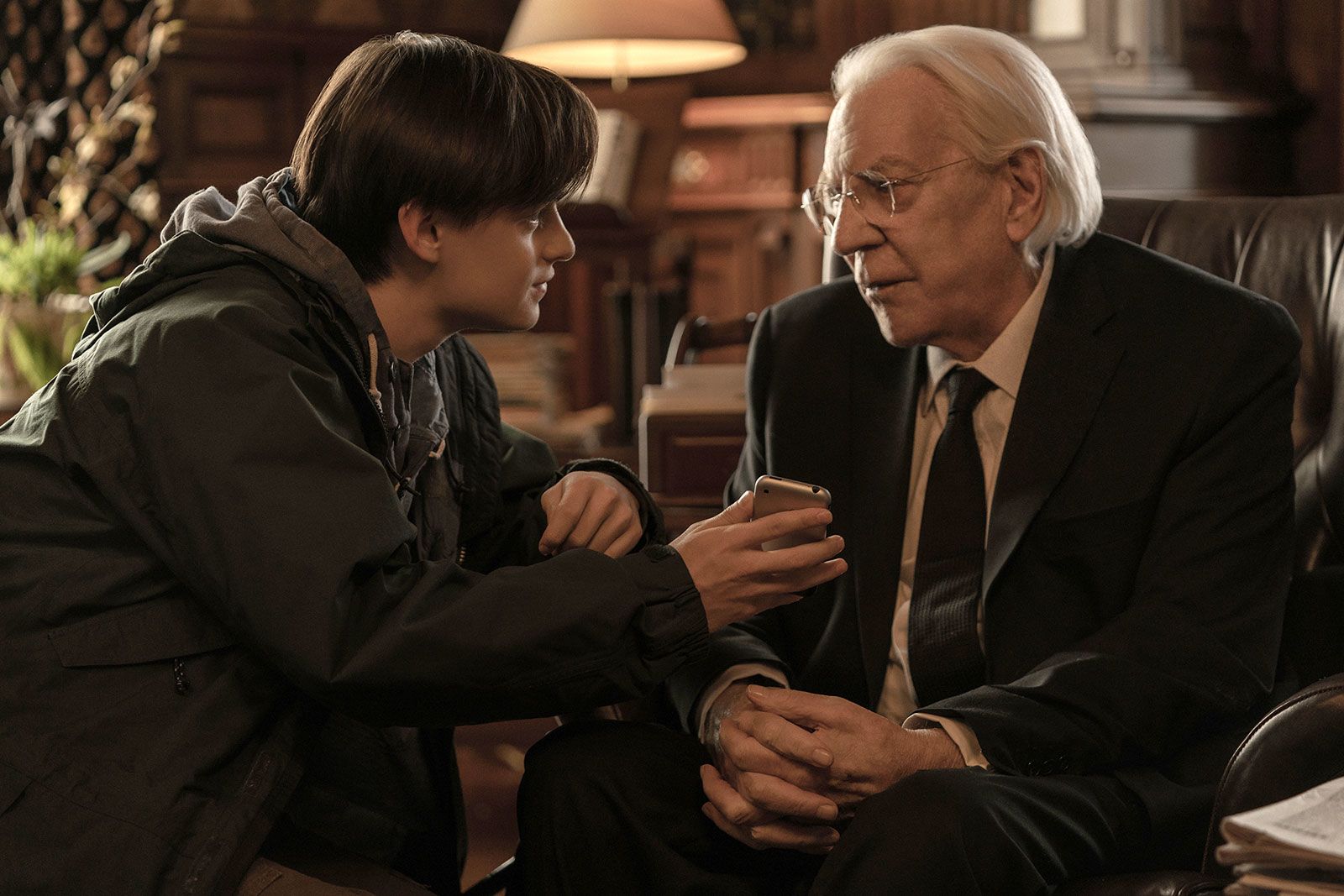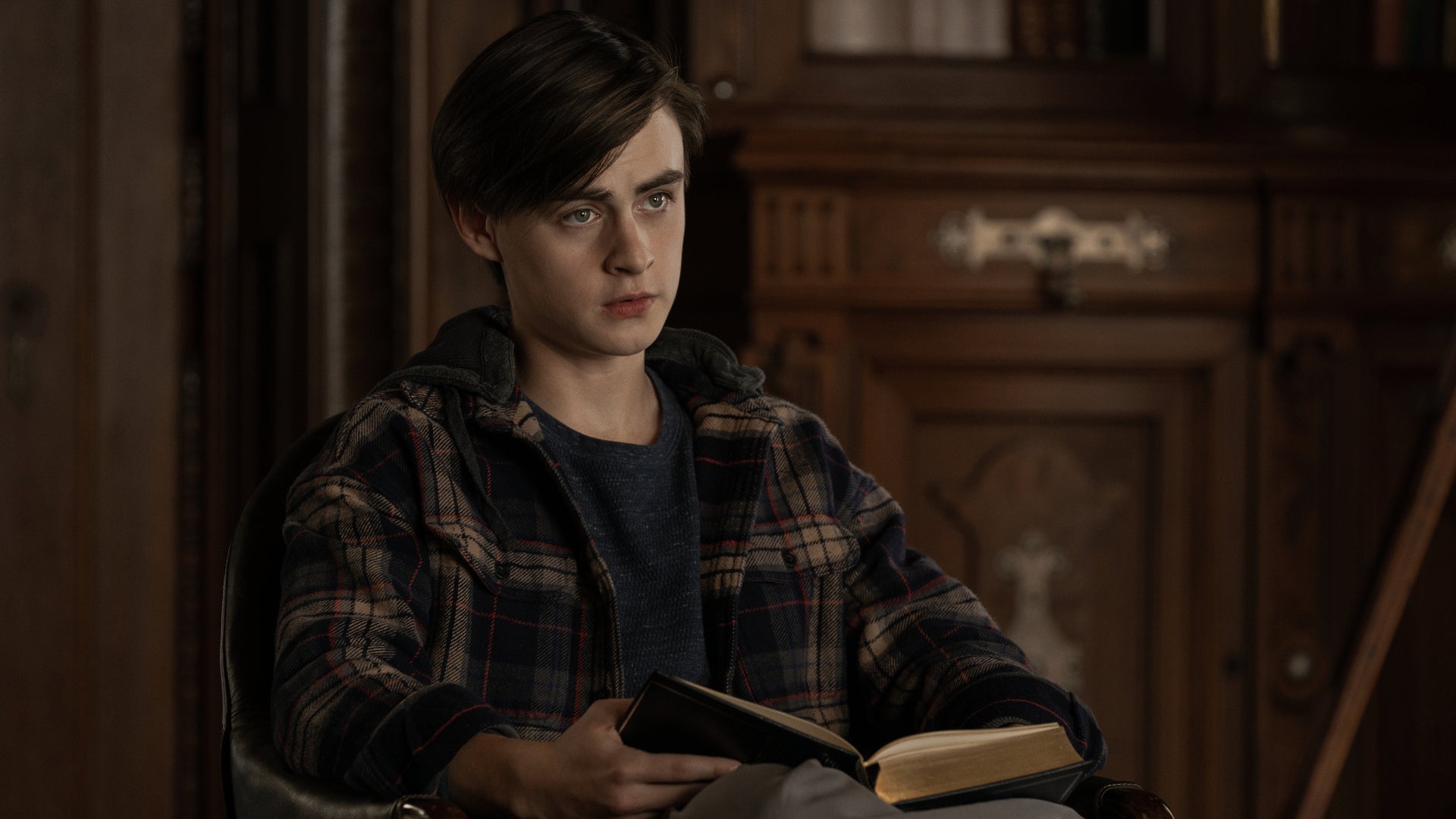
Stephen King adaptations have come and gone; some good and some bad. On October 5th, Netflix released “Mr. Harrigan’s Phone,” a horror movie following Craig (Jaeden Martell), a teenage boy who is hired to read to Harlow, Maine’s billionaire resident, Mr. Harrigan (Donald Sutherland). Craig is introduced as a young boy grieving the death of his mother, while also becoming curious about Mr. Harrigan and the hidden secrets in his giant mansion.
Craig narrates his thoughts to the audience as he explores his literary and thought-provoking relationship with Mr. Harrigan. It enables viewers to understand not only Craig’s curiosity over his new friend but also a close look into the placid life that he lives. Harlow, Maine isn’t an extraordinary town to live in until Craig’s adolescent world is thrown into Gates Falls High; the epitome of hell.
The build-up of relationships in the movie does a good job of displaying the rigidness between each character. Craig and his father’s (Joe Tippet) relationship wavers in every awkward transition from scene to scene, causing Craig to turn to Mr. Harrigan for basic life advice. Though Craig holds some kind of tenderness for Mr. Harrigan as a mentor, Mr. Harrigan often gives the young boy the cold shoulder until death parts them.
Phones play a symbolic role throughout the movie, not only as a way of connecting with others beyond unimaginable places, as Craig can speak to Mr. Harrigan’s “ghost” through his phone, but seemingly represent the gates to hell. Phones hold our attention for so long that sometimes the world around us continues to revolve without us ever looking up to notice at all. In “Mr. Harrigan’s Phone,” Mr. Harrigan quickly becomes encapsulated in the world of technology at the reach of his fingertips. His lack of attention towards Craig, who reads books to him, highlights how many of our interests can become downplayed the second a phone is brought to our hands. It also explores how one can become so connected in unimaginable ways to others that it can get in over our heads, as in Craig’s case.
For the first 40 minutes of the film, viewers get a look into Craig’s varying relationships and the obliviousness of Mr. Harrigan’s character. Having this information acted out on the screen is important to gather the little backstory we get, but the narrative feels bleak until Mr. Harrigan passes away. Its elements of horror lack from beginning to end as the movie progresses. Rather than a horror movie, the film feels like a gloomy coming-of-age story that takes an eternity to develop.
Many reviews about the film have been mixed, with some split between the idea that the film was dull or that it was a slow burn that introduced the hidden message about connectivity and grief. Its lack of horror may disappoint some viewers and may enlighten others who wish to see how a young teenage boy overcomes the loss of important figures in his life. With the latter idea in mind, the film does a good job of exploring Craig’s inner demons and how he must deal with the unwelcoming surprises that Mr. Harrigan’s ghost has left behind. This includes scenes where Craig continuously leaves recorded messages on Mr. Harrigan’s phone that become his personal diary entries.
Verdict: “Mr. Harrigan’s Phone” should have been marketed as a coming-of-story that explores grief and haunting memories rather than inserted into the horror genre because of its creator, Stephen King.








